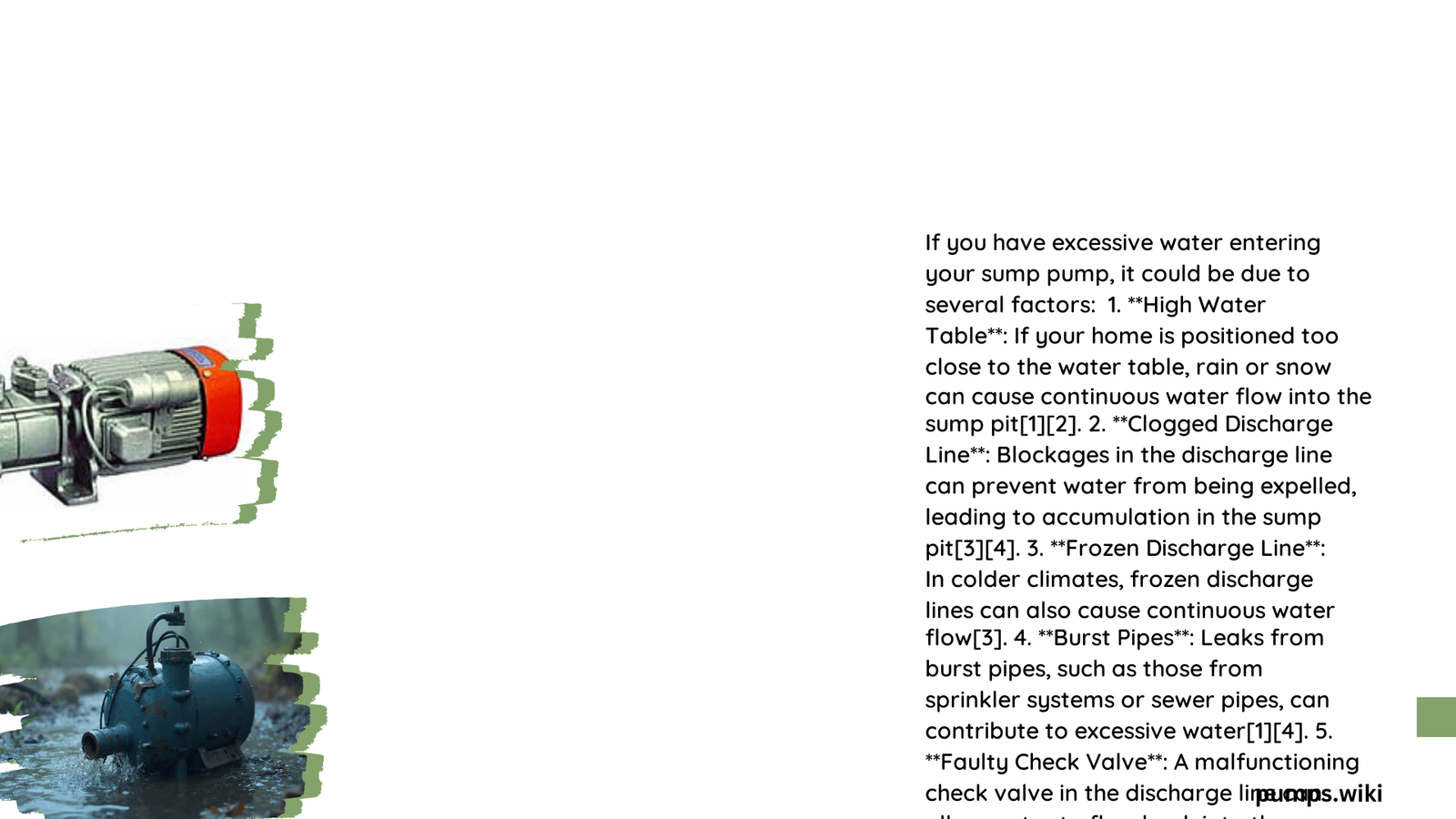Dealing with excessive water entering your sump pump can be overwhelming and potentially damaging to your home’s foundation. Homeowners experiencing high water volumes need a strategic approach to understand the root causes, measure water inflow rates, and implement targeted solutions that prevent basement flooding and protect their property’s structural integrity.
What Causes Excessive Water Inflow?
Water accumulation in sump pumps can result from multiple interconnected factors. Understanding these elements is crucial for developing an effective water management strategy.
How Much Water Is Actually Entering?
To diagnose your sump pump’s water volume, follow these precise measurement techniques:
- Water Rise Measurement
- Use a marked stick or ruler in the sump pit
- Measure water rise during peak rainfall
-
Calculate gallons per minute (GPM)
-
Basin Diameter Considerations
| Basin Size | Water Volume per Inch |
|———–|————————|
| 18-inch | Approximately 1 gallon |
| 24-inch | Approximately 2 gallons|
What Determines Sump Pump Capacity?
Sump pump effectiveness depends on several critical factors:
- Horsepower Rating
- 0.5 HP pumps: Typically handle 3,000 gallons per hour
-
Higher HP models: Up to 4,000 gallons per hour
-
Lift Distance Impact
- Higher vertical lift reduces pumping efficiency
- Example: 3,000 GPH pump might drop to 2,000 GPH at increased heights
How Can You Resolve High Water Volume?
Implement these strategic solutions:
- Pump Upgrade Strategies
- Select pump with 1.5x calculated water inflow capacity
- Consider dual-pump systems for redundancy
-
Evaluate backup battery-powered options
-
Drainage Improvement Techniques
- Extend discharge pipes away from foundation
- Install French drains
- Improve landscape grading
What Are Common Water Inflow Sources?
Potential water entry points include:
- Underground water table fluctuations
- Heavy rainfall periods
- Snowmelt
- Improper landscape drainage
- Foundation cracks
How to Prevent Future Water Accumulation?
Proactive measures include:
- Regular sump pump maintenance
- Annual professional inspection
- Install water alarms
- Seal foundation cracks
- Improve exterior drainage systems
Technical Recommendations

Recommended Pump Capacities
– Sandy Soil: 14 GPM per 1,000 sq. ft.
– Clay Soil: 8 GPM per 1,000 sq. ft.
Cost Estimates
– Sump Pit Enlargement: $100 – $500
– High-Capacity Pump: $200 – $1,000
– Backup Pump Systems: $200 – $1,500
Professional Consultation
While DIY solutions can help, complex water management scenarios might require professional assessment. Consider consulting a waterproofing specialist for comprehensive evaluation.
Key Takeaways
- Measure water inflow precisely
- Choose appropriately sized pump
- Implement multi-layered water management strategy
- Conduct regular maintenance
References:
– RadonSeal Sump Pit Guide
– WATERPROOF Magazine Pump Sizing
– High 5 Plumbing Pump Capacity
